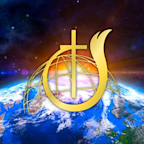Search results
Learn about the mission, history, and ministries of The Episcopal Church, a Christian denomination in the United States. Find a church, donate, watch videos, and join the Episcopal Service Corps.
- Find a Church
Find a Church - The Episcopal Church – The Episcopal Church
- Resource Library
Resource Library - The Episcopal Church – The Episcopal...
- Lectionary Calendar
This page is available in: Español
- Search
Search - The Episcopal Church – The Episcopal Church
- The Episcopal Church
As Episcopalians, we believe in and follow the teachings of...
- What We Do
What We Do - The Episcopal Church – The Episcopal Church
- Organizations & Affiliations
Organizations & Affiliations - The Episcopal Church – The...
- About Us
About Us. The Episcopal Church welcomes all who worship...
- Podcast
Podcast - The Episcopal Church – The Episcopal Church
- Timeline
1785: The First General Convention of Episcopal Church is...
- Find a Church
The Episcopal Church ( TEC ), based in the United States with additional dioceses elsewhere, is a member church of the worldwide Anglican Communion. It is a mainline Protestant denomination and is divided into nine provinces. The presiding bishop of the Episcopal Church is Michael Bruce Curry, the first African American bishop to serve in that position.
- Overview
- Early history to the 20th century
- The 20th century and beyond
Episcopal Church in the United States of America (ECUSA), autonomous church in the United States. Part of the Anglican Communion, it was formally organized in Philadelphia in 1789 as the successor to the Church of England in the American colonies. In points of doctrine, worship, and ministerial order, the church descended from and has remained asso...
The history of the church in America began with the first permanent English settlement at Jamestown, Virginia, in 1607. As more settlers arrived in America, the church spread and was the established church in several colonies. It was limited in its work, however, because no bishop was sent to the colonies, and only bishops could ordain priests and confirm church members. When the American Revolution began in 1775, there were about 300 Church of England congregations in the 13 colonies. The church suffered persecution and a decline in membership during the Revolution, because all the clergymen had taken an oath of allegiance to the crown at the time of their ordination, and many of them were Loyalists who were forced to flee to Canada or England.
Some, however, supported the Revolution. William White, chaplain of the Continental Congress, proposed that congregations form themselves into an American church that would continue the spiritual legacy of the Church of England but would otherwise separate from it. Conventions of clergy and laity were held in the early 1780s to claim church property formerly claimed by the Church of England and to plan for a new church. Interstate conventions in 1784 and 1785 began drafting a constitution and a prayer book. In 1787 English bishops consecrated White as bishop of Pennsylvania and Samuel Provoost as bishop of New York. Two years later White became the first presiding bishop of the new church. He was succeeded by Samuel Seabury, who in 1784 had become the first American to be consecrated an Anglican bishop.
In the 19th century the church expanded westward through the work of the Domestic and Foreign Missionary Society (organized in 1820). Foreign missions were begun in Greece in 1829 and subsequently expanded to other countries.
The Oxford movement in the Church of England, which emphasized the Roman Catholic heritage of the church (High Church), became influential in the Episcopal Church in the 1840s. Though it enriched the worship services and spiritual discipline of the church, it caused considerable controversy, because many Episcopalians preferred to emphasize the Protestant heritage (Low Church). In later years the promotion of liberal theology, biblical criticism, the Social Gospel, and the ecumenical movement lessened the tensions between the High and Low Church attitudes.
During the American Civil War, Episcopalians fought for both South and North. Unlike some other Protestant churches, however, the Episcopal Church avoided schism. In the years following the war, the church grew from 160,000 communicants in 1866 to 720,000 in 1900 and expanded into all parts of the United States. As the church grew in the United States, it established missionary dioceses in Africa, Asia, and Latin America. The church also took a regular part in the Lambeth Conference, periodic meetings of the bishops of the Anglican Communion that began in 1867.
Exclusive academic rate for students! Save 67% on Britannica Premium.
In the 20th century the church began to engage with other denominations. It took part in the ecumenical movement, joined the World Council of Churches, undertook dialogue with other Christian churches, and entered full communion with the Evangelical Lutheran Church. Episcopalians introduced liturgical reforms in the 1970s and produced a new prayer book in 1979. In 2008 the church became one of several mainline denominations to issue a formal apology for the fact that some pre-Civil War Episcopalians held slaves.
The church also took several controversial steps. In 1988 it elected its first woman bishop, Barbara C. Harris. (She was elected by the diocese of Massachusetts as a suffragan bishop, and as such she did not head the diocese. A number of other women have subsequently been elected to the office of suffragan bishop or bishop in other dioceses.) In 2003 the church ordained an openly gay man, V. Gene Robinson, as bishop of New Hampshire. In the following year the leaders of the member churches of the Anglican Communion agreed to a moratorium on the ordination as bishops of individuals in same-sex relationships. In 2006 Katharine Jefferts Schori, who had voted to install Robinson as bishop and who favoured church blessing of same-sex unions, was elected the church’s primate, or presiding bishop. Later that year the 75th General Convention of the ECUSA declared “support of gay and lesbian persons as children of God.” In 2009 the 76th General Convention prohibited congregations from denying ordination to homosexual priests, authorized bishops to permit priests to bless same-sex unions in states where they are legal, and encouraged theological reflection on same-sex unions and the creation of liturgies that may be used in them.
These steps sparked opposition not only within the Episcopal Church but also within the Anglican Communion as the American church drew sharp international criticism. Some traditionalists began to consider secession from the ECUSA. Eleven Virginia congregations voted in 2006 to leave the ECUSA while still remaining within the Anglican Communion. In 2007 the Convocation of Anglicans in North America (CANA) was instituted as “an Anglican missionary effort in the U.S.” under Peter J. Akinola, archbishop of the Church of Nigeria and a harsh vocal critic of Robinson’s election as bishop. Akinola installed Virginia rector Martyn Minns as bishop of CANA without authorization from Archbishop of Canterbury Rowan Williams. Congregations in Pittsburgh, Pa., Quincy, Ill., San Joaquin, Calif., and Fort Worth, Texas, left the ECUSA in 2008. Later that year delegates representing 100,000 Anglicans in the United States and Canada met in Wheaton, Ill., to discuss forming a separate church within the Anglican Communion. In 2009 these delegates met again in Bedford, Texas, and formed the Anglican Church in North America (ACNA). The new church claimed 700 parishes in 28 dioceses in the United States and Canada.
The ECUSA’s consecration of Mary Glasspool—who was in a same-sex relationship—as a suffragan bishop in the diocese of Los Angeles in 2010 increased tensions within the Anglican Communion between liberals and traditionalists. Williams issued a rebuke of the ECUSA for breaking the 2004 moratorium, and the Anglican Communion imposed sanctions on the ECUSA, barring it from participating in ecumenical dialogue and removing its decision-making powers in matters of church doctrine. The Communion again, in 2016, imposed sanctions on the ECUSA following the latter’s decision at its 78th General Convention the previous year to abandon canonical language defining marriage as a union between a man and a woman and to adopt two new rites of marriage that could be used by both same-sex and opposite-sex couples.
- The Editors of Encyclopaedia Britannica
In the United States, the history of the Episcopal Church has its origins in the Church of England, a church which stresses its continuity with the ancient Western church and claims to maintain apostolic succession. [1] Its close links to the Crown led to its reorganization on an independent basis in the 1780s.
Episcopal Church may refer to various churches in the Anglican, Methodist and Open Episcopal traditions. An episcopal church has bishops in its organisational structure (see episcopal polity ). Episcopalian is a synonym for Anglican in Scotland, the United States and several other locations.
People also ask
What is an Episcopal Church?
Does an Episcopal Church have bishops?
Is the Episcopal Church a national church?
What is the mission of the Episcopal Church?






